25 Aug Wired/ Guided Transmission Media
Guided media is a wired transmission media, in which data signals are guided along a physical path i.e. within a wire. Guided transmission media is also known as Bounded or wired. Some well-known Guided Transmission media includes Twisted Pair Cable, Coaxial cable, fiber optic cable, etc. In the previous lesson, we learned what is Transmission Media and its types, Guided and Unguided media. Let’s learn about Guided Transmission Media here,
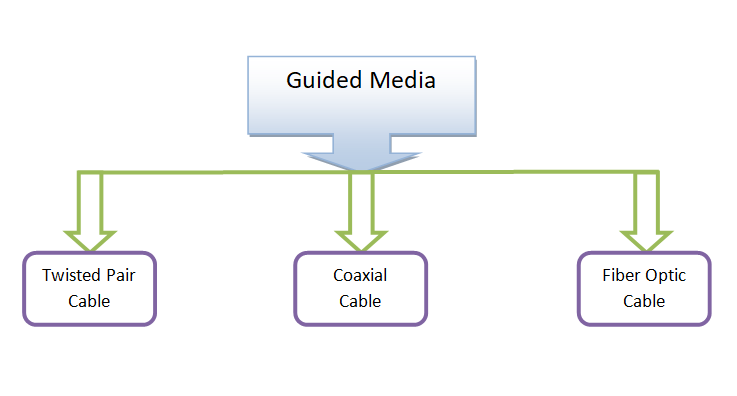
Twisted Pair Cable
In Twisted Pair Cable, the wires are twisted to reduce cross talk and electrical interference. It was invented by Alexander Graham Bell in 1881.
Advantages of Twisted Pair Cable
Here are some of its advantages,
- Easier to install
- The wire pairs are quite useful, and inexpensive.
- The wire can be used for analog or digital transmission.
- Crosstalk is less, since the wires are twisted.
Disadvantages of Twisted Pair Cable
These wires easily pick noise signal. This can be annoying, since it leads to high error rate, on line length extending 100 metres.
Here are the two types of Twisted Pair Cable,
Unshielded Twisted Pair Cable
The unshielded twisted pair cable is a Guided Transmission Media, which is used for transmitting both data and voice. UTP is also useful for LAN technologies, such as Ethernet, security cameras, telephony system etc.
The cable has two insulating copper wires. The size of these wires is 1mm thick. Each of these has its own colored plastic insulation. Colors are different to identify it from particular conductors. They are twisted in a helical form, so that it helps in reducing electrical interference or crosstalk. Also, these cables are cheap, and easy to deploy.
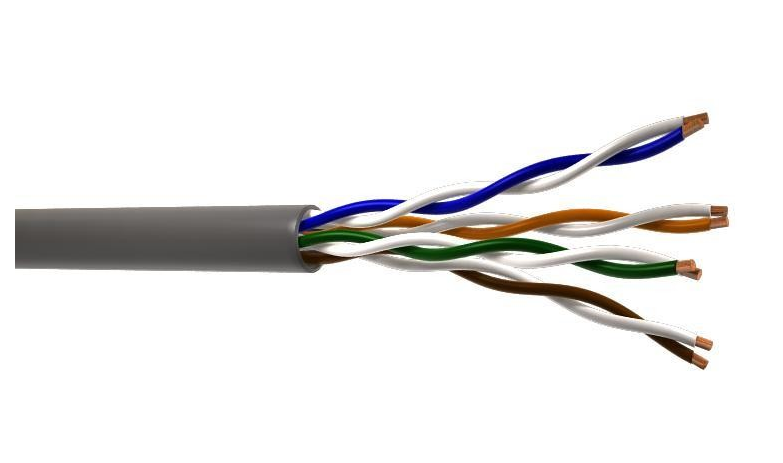
Here’s another figure showing unshielded twisted pairs of wires:
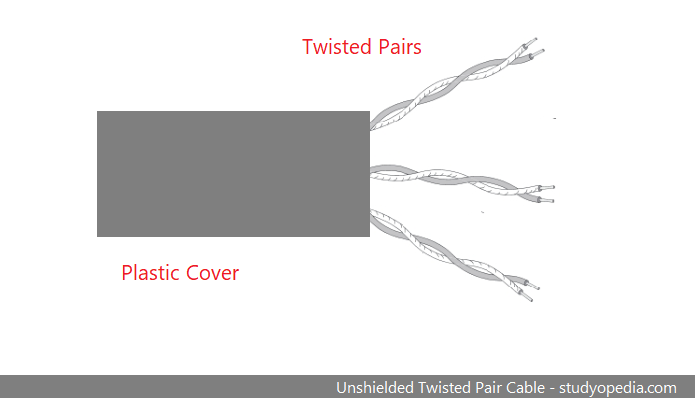
Shielded Twisted Pair Cable
The shielded twisted pair cable is a Guided Transmission Media , which is quite expensive than unshielded twisted pair cable. Shielded cable is less prone to noise.
STP encases each pair of insulated conductors with a metal foil. To prevent the electromagnetic noise, and eliminate cross talk, the casing is useful. Crosstalk occurs when one line catches some other signal travelling down another line. You may have experienced the Crosstalk effect during conversations on telephone.
Shielding these twisted pair cables succeed in eliminating majority of Crosstalk.
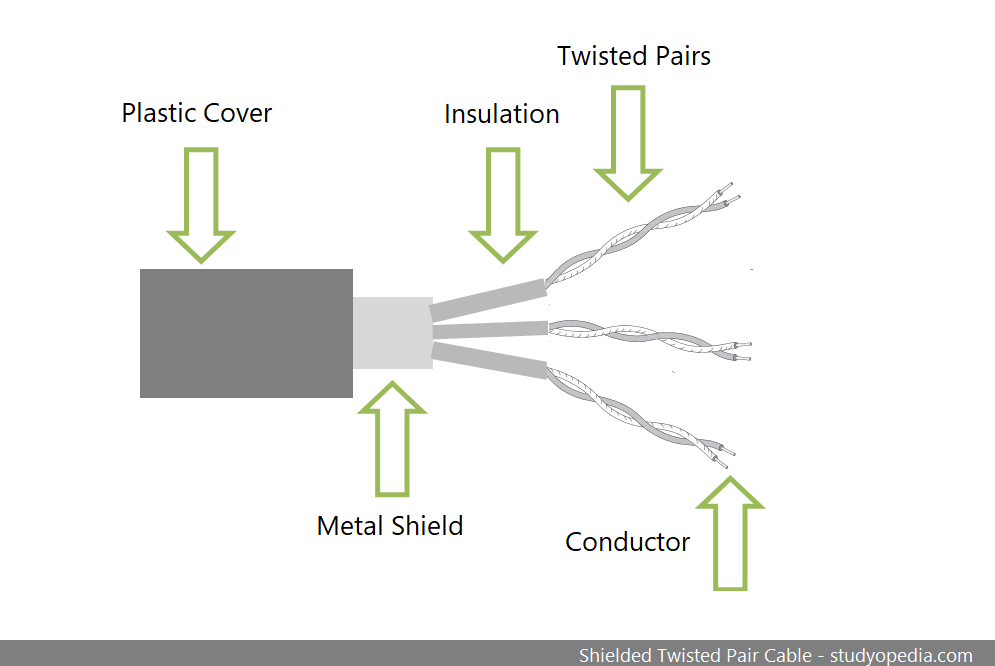
Shielded Twisted Pair Cable are more expensive than Unshielded Twisted Pair Cable, but less susceptible to noise.
Coaxial Cable
Coaxial cable is a group of wrapped and insulated wire line. They transmit data at higher rates. Coax has a central core conductor. The conductor is made of copper wire surrounded by PVC insulation. This insulation is encased in an outer conductor of metal foil, which is enclosed in a PVC insulation sheath. Also, it is completely covered by a plastic cover.
The outer conductor acts as a shield against noise.
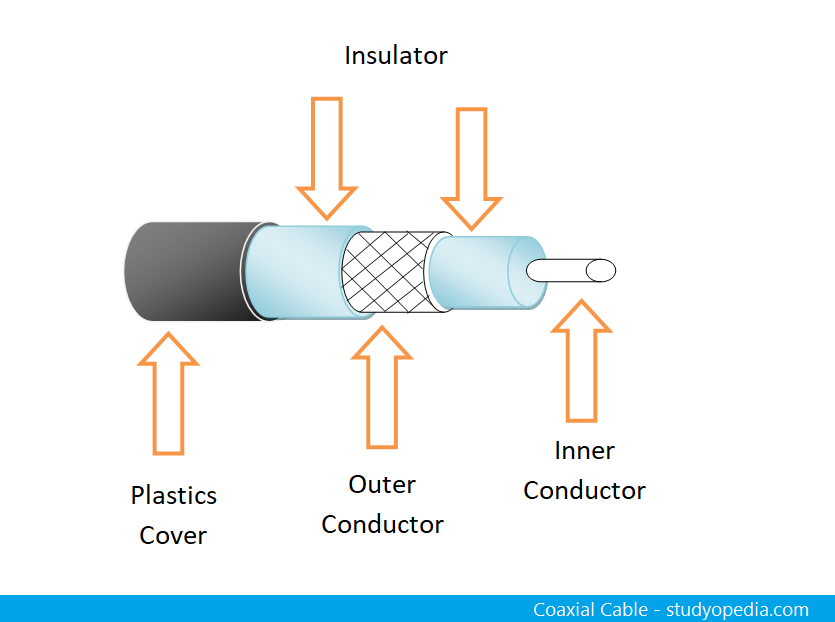
Here are some of the advantages of Coaxial cable,
Advantages of Coaxial Cable
Here are the advantages of Coaxial cable,
- Coaxial cable is used in cable television.
- It offers much higher bandwidth.
- It is preferred for long distance telephone lines as well.
- Provides better shield when compared with Twisted Pair cable.
- It offers data transmission without any distortion.
- Expect quite higher noise immunity from coaxial cable.
Here are the two types of Coaxial cable,
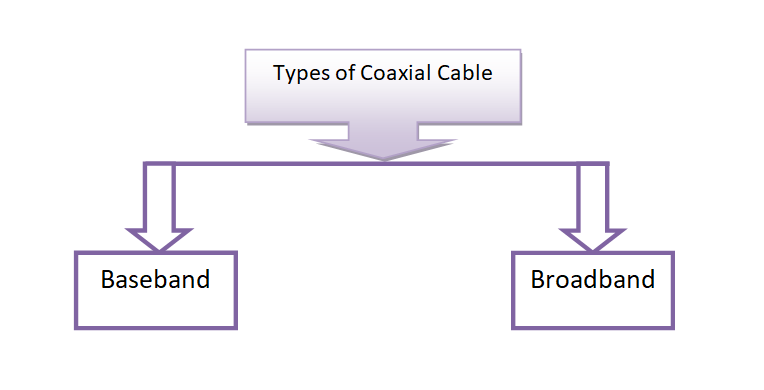
Baseband Coaxial Cable
LAN generally uses Baseband Coaxial cable. It is the 50 ohm coaxial cable used for digital transmission. The cable comes with a power of transmitting a single signal at quite high speed. It transmits a single signal at a time.
Broadband Coaxial Cable
This cable transmits many simultaneous signals and that too using different frequency. It covers more area than the Baseband coaxial cable and can run nearly 100km, but requires analog amplifiers. Amplifiers are used to strengthen the signal periodically.
Fiber-optic cable
Fiber-optic cable, also known as Optical Fibre provides high quality transmission of signals at high speed.
The fiber optic cable has a glass core in the center. Through the glass core, light propagates. The glass core is then surrounded by a glass cladding. This has lower index of refraction as compared to core, so that the light remains in the core itself. To protect the gladding, a thin plastic jacket is used.
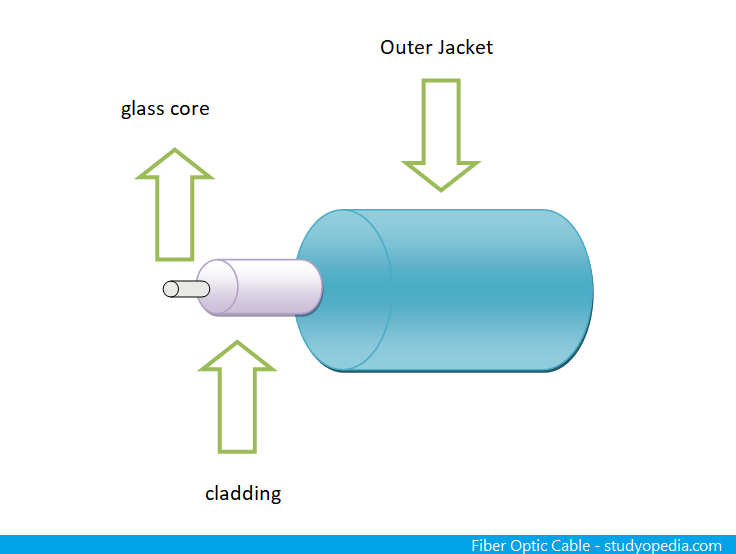
How Fiber-optic cable works
In optical fiber, information is transmitted by semiconductor lasers in the form of light. The source has a converter, which converts electrical signals into light waves. The light waves get transmitted over the fiber. The destination also has a converter, which converts the light waves back to electric signals. The signal is sent to the receiver after amplification.
Advantages
Here are the advantages,
- Fiber-optic cable do not get affected by electromagnetic interference.
- It you want high quality transmission of signals at very high speed, use fiber-optic cable .
- Works for both analog as well as digital signals.
- Point to point one way communication generally uses the cable.
If you liked the tutorial, spread the word and share the link and our website Studyopedia with others.
For Videos, Join Our YouTube Channel: Join Now


abdi zanzibar
Posted at 22:30h, 19 Februaryso interested thanks